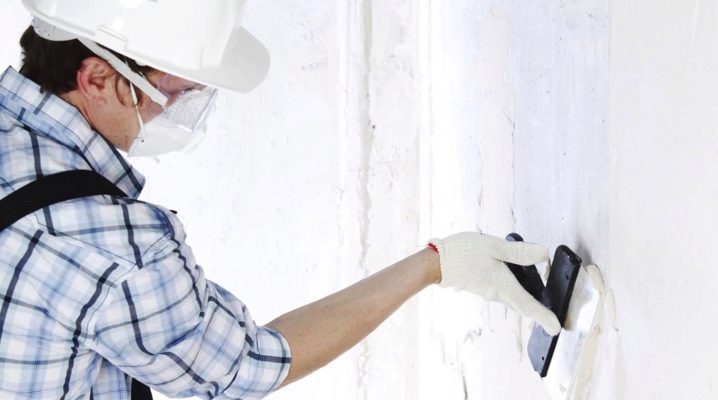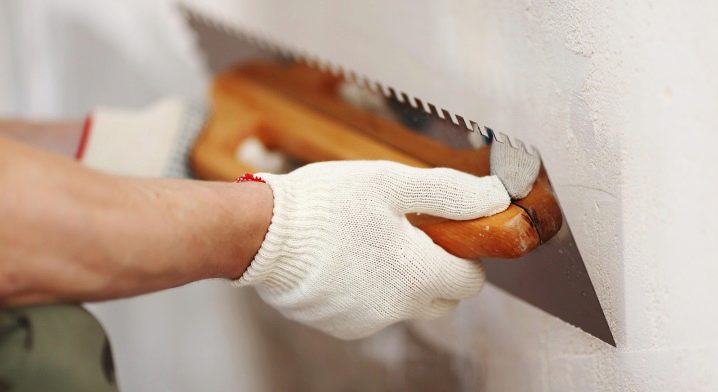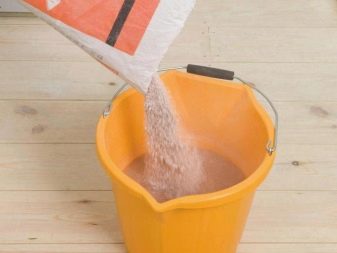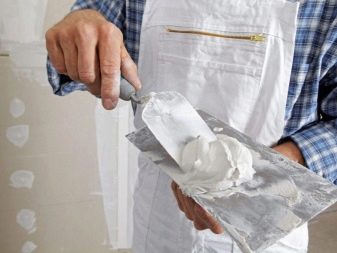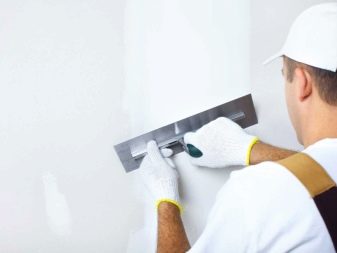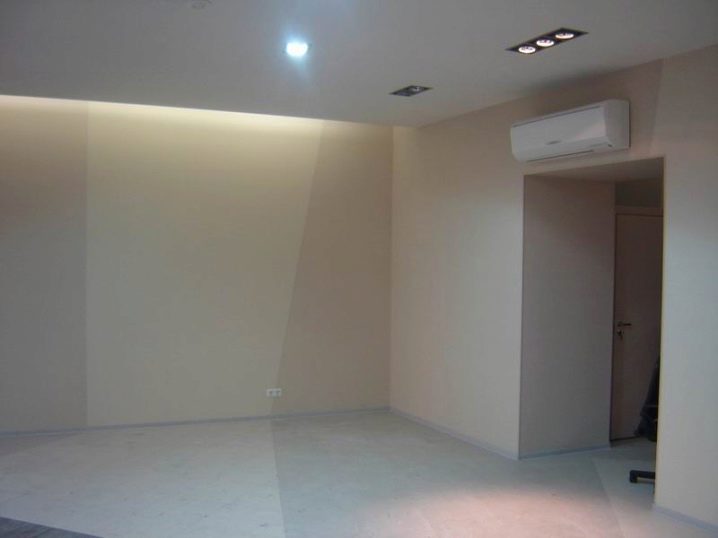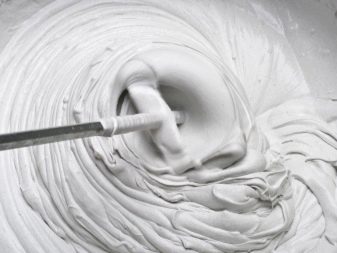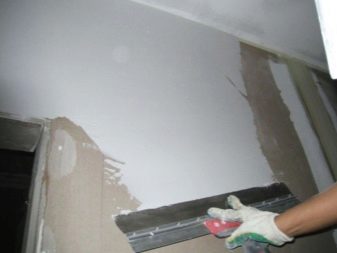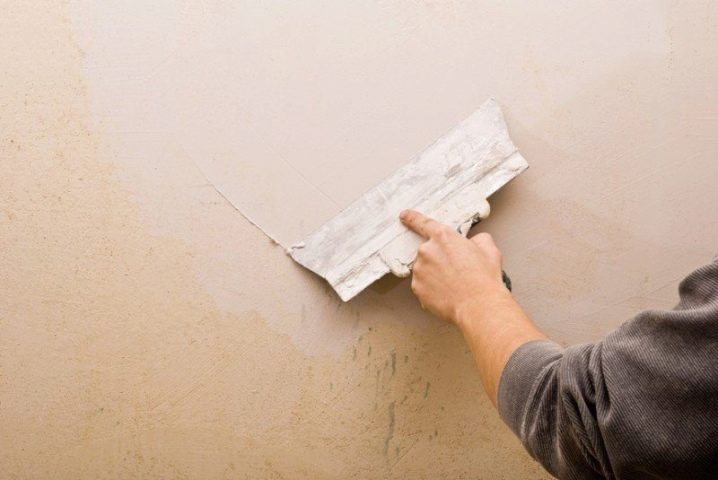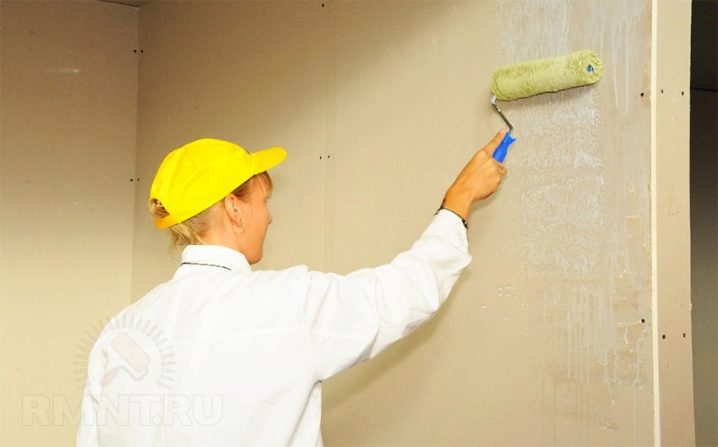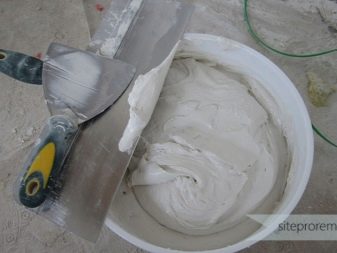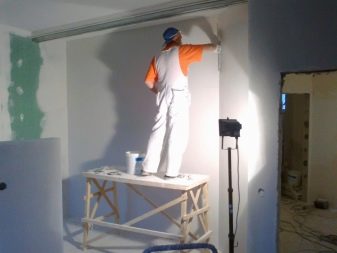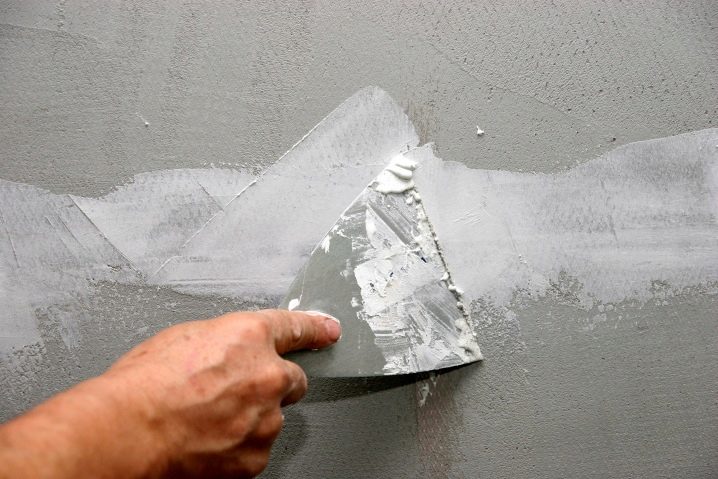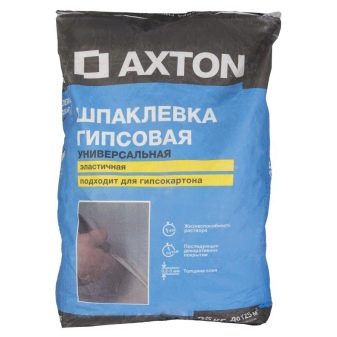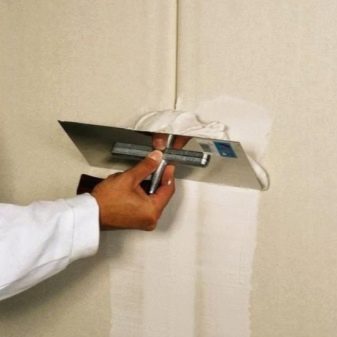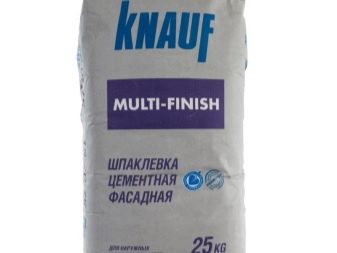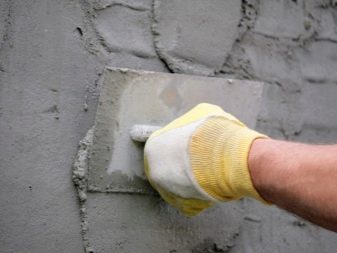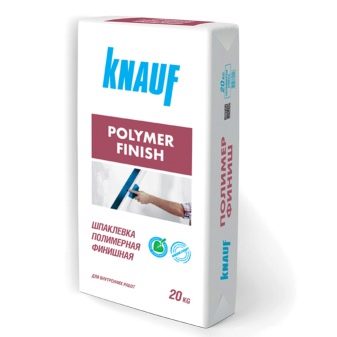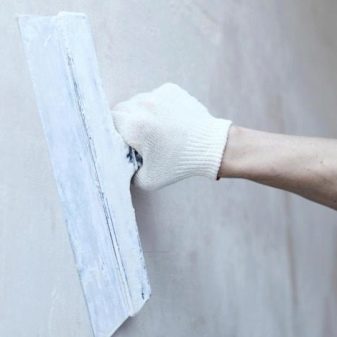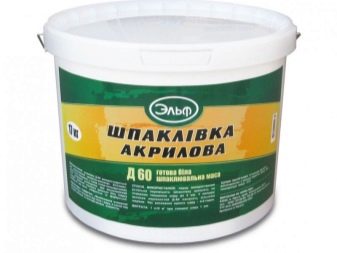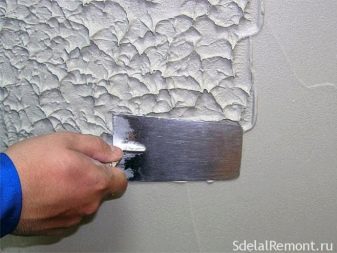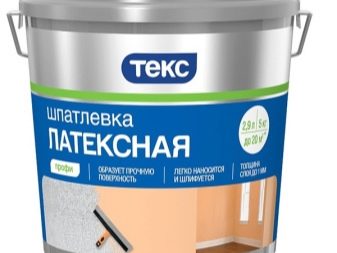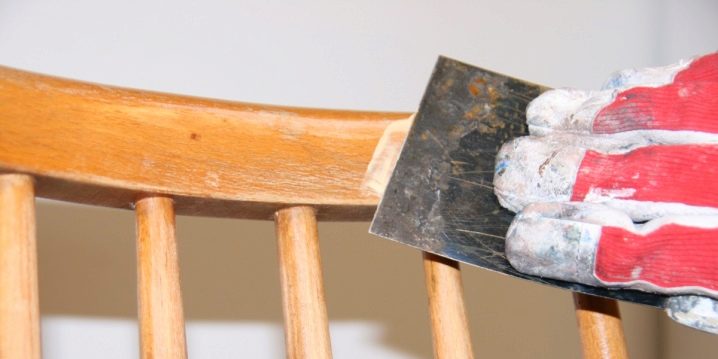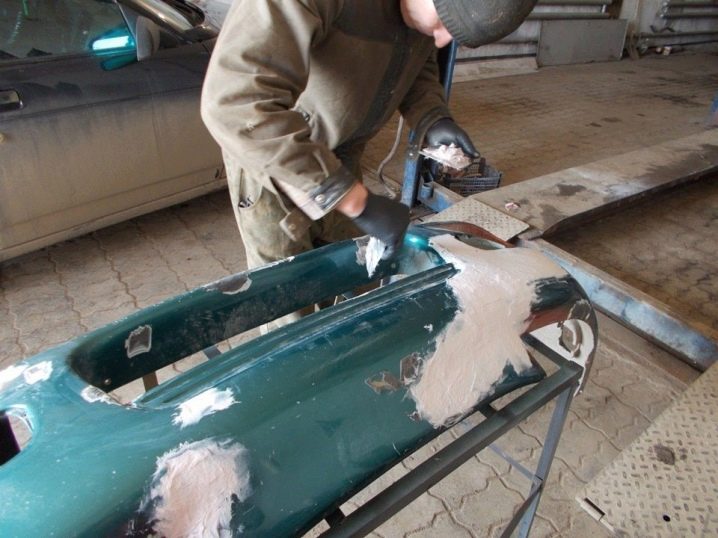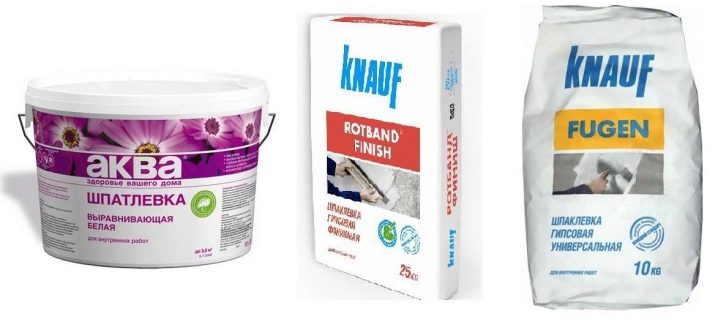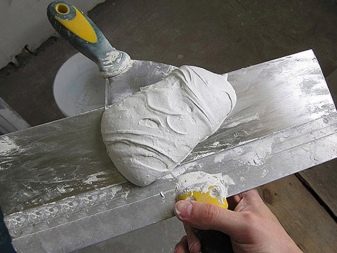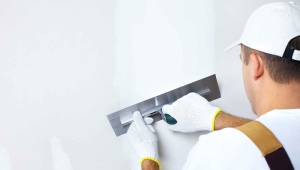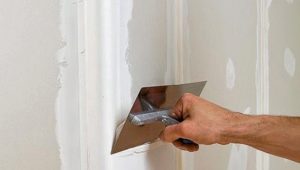How much dry putty?
The final preparation of the area for the final coating is called puttying. In order for repairs to end on time and without annoying mistakes, it is advisable to follow the technical guidelines recommended by the manufacturer, adhere to the technologies and methods of using materials. You need to know how much dry putty will dry. In case of partial drying of the working area, the treatment should not be continued.
If you change the sequence and timing of the process will inevitably be followed by the detachment of the material from the base, bloating and the occurrence of spots and stains.
Influencing factors
The principle of the putty is based on the change of their condition and consistency throughout the entire process. The dry composition is diluted with water to the desired type and applied to the surface. The moisture gradually evaporates, and the putty gets the necessary hardness and strength.
Environment
One of the factors affecting the rate of drying of the mixture, is the influence of the environment. There are optimal modes of temperature and humidity levels, they were taken into account by manufacturers in the design of compositions of putty mixtures. Ideal temperature conditions range from + 6 to + 25 degrees.
The implementation of operations at lower temperatures will lead to disruption of the process and, as a consequence, poor-quality putty. Curing should take place in the temperature regime prescribed by the manufacturer. The mixture is enriched with special additives for operation at low temperatures.
Excessively high temperatures also adversely affect the quality, hardening will take place quickly, but unevenly. Fresh layer is sensitive to direct sunlight. It is recommended to cover newly treated areas with a protective film.
Humidity
Moisture has a direct impact on the quality of surface smoothing. To create the perfect layer of moisture content should not exceed 50%. Increasing the humidity level to 75–80% will significantly increase the drying time of the treated area.
Air flow
The rate of work without loss of quality is positively affected by good ventilation of the room. Draft should be avoided.
Time to dry putty on the walls depends on several factors:
- thickness and number of layers;
- surface features;
- characteristics of the mixture.
Layer thickness
High-quality putty involves applying a set of the most thin layers of the mixture and their consistent drying. The thicker the coating ball and the number of layers, the longer the drying process will take place.
Surface
The porosity of the surface to be treated stimulates an increased absorption of the liquid, which accelerates the hardening of the putty and leads to its cracking. This can be avoided by pre-priming the work area.
Before starting the repair, you should familiarize yourself with the instructions, since it describes in detail the process of applying the equalizer and the time required for drying.
Old plaster is often used as a base, so it has no effect on the timing of the work. To use fresh plaster in this role, it is necessary to know the exact time of its drying.
Actions can be carried out only on a completely dry surface. A layer of fresh plaster with a thickness of 1.5–2 mm will be ready in 24 hours at optimum temperature and sufficient ventilation.
The standard layer dries about 7 days depending on the thickness. The longer you let the plaster stand, the stronger the foundation will be. It reaches final strength in 26–28 days.
Each putty has its own characteristics laid down by the manufacturer. They should be considered when planning and carrying out repairs.
Species
Depending on the type of treated surfaces, the fillers differ in composition. They can include various binding components: gypsum, cement, lime with various additives, as well as polymers, for example, latex or acrylic.
On the basis of gypsum
When using putty based on this connecting element, it is necessary to remember about the features of the use of this equalizer.
This putty is suitable only for carrying out internal repair work in optimum on humidity conditions. The material absorbs the liquid from the air, so under wet conditions there is detachment and shedding.
This is the fastest-drying type of putty.For a day, without violating the manufacturer's instructions, you can apply up to 3 layers of equalizer. The drying of one thin ball takes from 3 to 6 hours.
Gypsum putty dries very quicklyThat is positively displayed on the general terms of the repair. But improper batching planning leads to waste of material. It simply dries up before you have spent it.
The material shows positive adhesion properties and is characterized by ease of operation.
Cement-lime
Cement compositions have a number of advantages that distinguish them from other mixtures. The democratic price of the product together with the fantastic strength of the coating, operations in environments with high humidity and the possibility of temperature differences, make this type of processing extremely popular.
Preparation of the base under the tile, porcelain and stone is carried out by this means. The absence of a negative reaction to dampness and low temperatures allows for exterior facade finishing work. The putty is great for smoothing the joints of plates and cracks,without affecting the durability of supporting structures.
Such a putty dries from 24 to 48 hours depending on the thickness of the applied layer and external conditions. The average thickness of the applied layer is 6 mm.
Based on polymer components
Mixtures of this type are universal. They are becoming more common because they can be used for both internal and external finishing works. They are absolutely not afraid of moisture, demonstrate excellent elasticity. The solution based on polymeric binders does not shrink and crack after drying, and is not susceptible to other types of deformation. In addition to leveling, the mixture has protective functions, and can additionally be used to decorate walls. Masters cut out randomly placed forms and strokes on raw putty.
Polymer putty is most often used as a finish. The ability to apply very thin layers (up to 1 mm) can significantly reduce material consumption. It is possible to start the subsequent operations in 3-4 hours depending on the thickness of the applied ball and the personal features of the equalizer.
With all the unconditional advantages, grout on the basis of polymer binders has one significant disadvantage - a rather high price. The use of innovative synthetic fillers increase the expenditure on consumables by about half when compared with the traditional method.
Acrylic
The acrylic leveling mortar is easy to use and versatile at the point of use. It can be used for both internal and external decorating.
The mixture does not lose its technical characteristics in the heat or frost, retains its features in the rain and snow. It does not have an equivalent replacement when working with concrete and drywall systems.
Latex
Latex putty is actively used for processing walls and ceilings inside rooms. The striking elasticity allows you to apply very thin layers of material (from 1 mm), which makes it extremely practical.
A characteristic feature of this type of filler is the absence of odor.
Alkyd
Alkyd putties differ from all of the above by a certain level of toxicity, which implies their use only in rooms with good ventilation.They are used to prepare for painting wood and metal products.
Alkyd putties designed for long-term storage after the start of use. If the container with the solution is carefully closed, the tool will retain its properties for a month.
For plastic parts
This type of car is actively used by car painters in preparation for painting plastic elements in the design of cars. It is represented on the market by many species from different manufacturers.
A distinctive feature is the fast drying process, which is 20-30 minutes.
Acceleration of drying
It is impossible to accurately answer the question, how long will the putty dry? Since the drying process depends on the external environment, the characteristics of the material used and the thickness, the composition of the putty.
Complete drying of the filler mixture depending on the type:
- gypsum - dries from 3 to 6 hours;
- cement - from 24 to 48 hours;
- polymer - from 4 hours.
Manufacturers do not recommend accelerating the polymerization reaction. Curing should take place according to the technological features of the process.
It is possible and necessary to create optimal conditions for high-quality work.
- It is necessary to maintain the design temperature in the room in the range from +6 to +25 degrees. In the case of aggressive heating, for example, a hair dryer, inevitably uneven drying, which ultimately leads to cracks and shedding.
- It is recommended to avoid sudden changes in temperature.
- Sufficient ventilation should be provided to remove excess moisture - but not a draft, since it has a detrimental effect on the treated ceilings and walls.
The classic way to speed up repairs is to use quick-drying blends. All characteristics and features of putties are described in detail in the instructions. They are often used before sticking wallpaper.
Conclusion
Before you begin repairs, you need to accurately identify the volume of the tasks and the features of their implementation. The process of puttying requires special knowledge and at least minimal experience.
"Minor" little things in the course of work are crucial in the end. One of such details is the correct use and drying of putty mixtures.
In case of violation of the technologies developed and tested by the manufacturer, non-compliance with the temperature and humidity levels provided by the instruction, errors will be inevitable.
It is better to spend time and prepare for the technical operations. Qualitative result is not long in coming.
For information on how to putty walls, see the next video.
